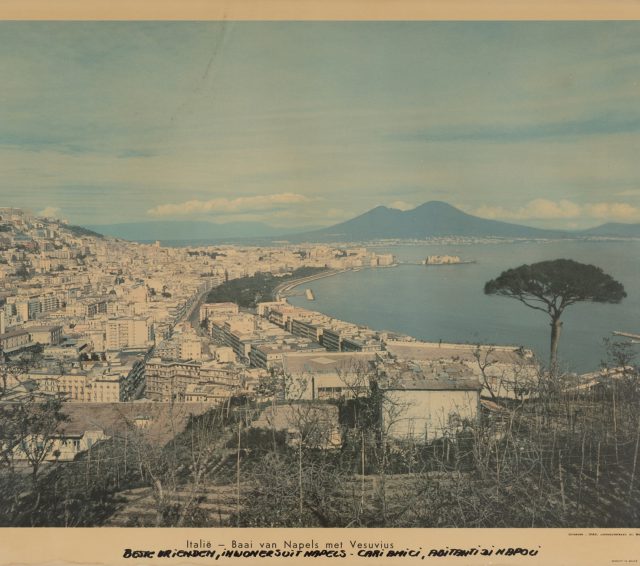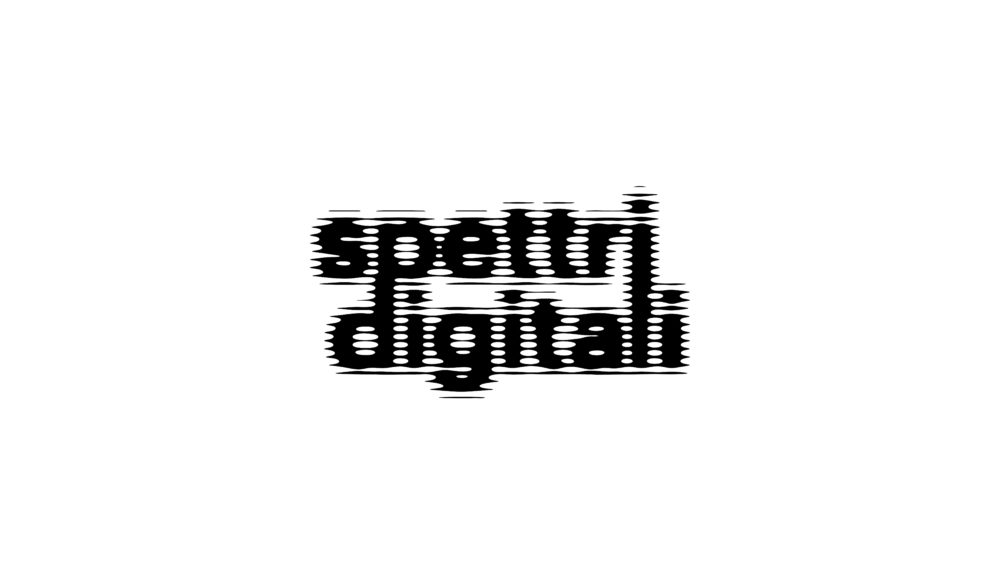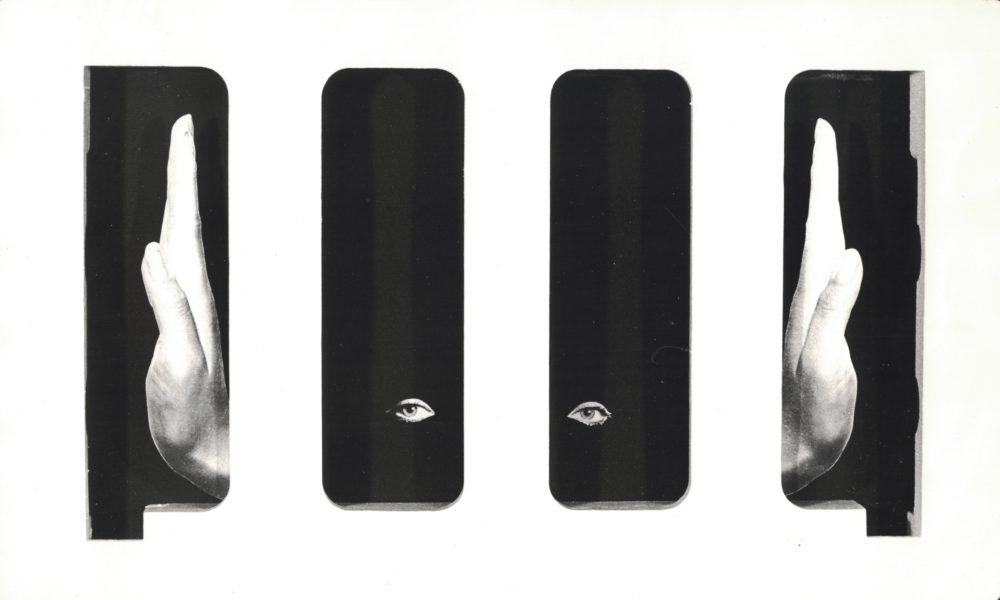Per_formare una collezione. The Show Must Go_ON (“Per_forming a collection. The Show Must Go_ON“) and Per_formare una collezione. Per un archivio dell’arte in Campania (“Per_forming a collection. For an Art Archive in Campania“) together represent the further, articulated chapter of the project – launched in 2013 and organised in various intermediate chapters – devoted by Madre to the gradual formation of the permanent collection.
This chapter also confirms the main directions in which the Madre collection has been heading in the last five years: on the one hand, the collection tells the story of avant-garde culture, with specific reference to what has happened in Naples and Campania over the last fifty years – illustrating their role as historical crossroads of the cutting edge researches in every field of contemporary experimentation – on the other hand, it explores the present and offers a hypothetical vision of the future, through the inclusion of artists that have responded with new works and commissions to this history. Rather than being organised in chronological order, or by following historicised lines of research or groupings, the itinerary is arranged according to a critical-cum-thematic arrangement so that the works and documents generate a dialogue between potentially common languages and practices of artists belonging to different generations, educational and geographical backgrounds. In this way the Madre museum has built up a collection that is rooted in its own territory and is highly aware of the dynamics of international artistic research.
Just like an open-ended finale, the project is destined to proceed over time (hence the first title of this chapter, The Show Must Go_ON), in order to continue to explore the “performative/formational” character exerted by the collection on the identity and functions of the museum itself.
Per_formare una collezione. The Show Must Go_ON
Per_formare una collezione. The Show Must Go_ON presents the artworks of more than 50 artists in the galleries of the second floor where the works, while maintaining the autonomy of individual artistic practices, are displayed in an integrated itinerary of rooms that gradually explores unifying themes and also reinterprets works and documents already present in the collection from new points of view:
- the role of the word and language in a physical and social space;
- the self-representation of the artist, his multi-form mythology and contemporary mythologies, revamping the display, amongst other works, of the five versions in the collection of We Are the Revolution (“La Rivoluzione siamo Noi”, 1971) by Joseph Beuys and the portrait of the German artist made by Andy Warhol in 1980, Beuys by Warhol;
- the narrative and performative activation of the work, operating in the relations between visual arts, performance and theatre;
- the practices of sculpture and painting within the environment of the processual and conceptual art of the neo-avant-gardes during the 60s and 70s, the return to painting during the 80s (with the rediscovery of elements such as tradition, folklore and manual skills at the beginning, a foretaste of possible contemporary archaism, challenging digital domination), until the current styles of painting set at the limits of individuality and immersed in relational processes and public involvement;
- the fluctuations between analogical and digital, two and three dimensions, with specific reference to video and photography;
- the relationships between art, architecture and design, in particular with regard to the radical forms that rethink our collective lifestyle and their contemporary stimuli.
As part of this new chapter, the Madre collection is enriched with historical works and new commissions by over 50 artists: Lucas Ajemian, Kai Althoff, Francesco Arena, John Armleder, Darren Bader, Eli Begen, Nina Beier, Monica Bonvicini, Gregorio Botta, Paolo Bresciani, Sol Calero, Antoine Catala, Maurizio Cattelan, Mathew Cerletty, Maria Adele Del Vecchio, Eugenio della Croce, Amelia Diacono, J.W. Dibbi, Alberto Di Fabio, Gerardo Di Fiore, Roe Ethridge, Pierpaolo Falone, Sergio Fermariello, Ilaria Fincantieri, Urs Fischer, Anselm Fuchs, Ganzbrot Kollektiv, Jef Geys, Eugenio Giliberti, Judith Goudsmit, Leila Heidari, Corin Hewitt, KAYA (Kerstin Brätsch-Debo Eilers-Kaya Serene), Barbara Kasten, Marc Kokopeli, Runo Lagomarsino, Greta Lauber, Mark Leckey, Sherrie Levine, Pietro Lista, Emilio Mazzerano, John McCracken, Alessandro Mendini, Aurelie Messerin, Jonathan Monk, Alvise Monserrato, Anca Munteanu Rimnic, Marcella Musacchi, Katharina Sieverding, Michael E Smith, Heji Shin, Martine Syms, Rosemarie Trockel, Elio Waschimps, John Wesley, Christopher Williams, Micheal Zahn.
The works and graphic artworks of Darren Bader have been added to the collection as a series of decoys which, taken together, express an elliptical perspective, a form of “camouflage”, on the works, the themes, the communicative and educational logic underpinning the displays, the theoretical foundations of the collection and the identity of the contemporary art museum. The intricate, nuanced work of the artist is designed as a subtle game for the visitor, a game whose edges and boundaries the artist does not intend to reveal. It also includes an invitation to appreciate a series of other artists, whose works are presented, together with his own and others that have become part of the collection, and a series of other works which are frequently minimalist, of a transformative or performative nature, many of which are reserved for a digital audience whom the artist addresses, beginning from the very title of his “exhibition within the exhibition”: (@mined_oud).
The itinerary comprises both historic works and new commissions which take stock of the importance of the museum collection and which also highlight three important inter-institutional collaborative initiatives:
The work of John Armleder Split!, done specifically by the artist for the spaces of the contemporary Art collection of the Museo e Real Bosco di Capodimonte, is a site-specific mural painting that recreates one of the works presented by Armleder during the 1986’s Biennale di Venezia (Swiss Pavilion): the Untitled painting created in 1984. In Capodimonte, Armleder’s work adopts the room’s dimension and dialogues with Il Grande Cretto Nero by Alberto Burri (1978), from which Split! reflects the monochrome structure, corroborating it but also subverting its aesthetics, intellectual and historical aspects. Different from the monochrome aspect of Burri’s work – which really represents the first stone in the foundation of a contemporary collection in Capodimonte – Armleder prefers to use a wide range of colours, inspired by the colourful collection of decorative arts of Capodimonte. First for instance, the terra-cotta and the diverse shades of gold – precious material of the composition – is reminiscent of the porcelains’ colours from the famous Royal Fabric of Capodimonte, created in the middle of the 18th Century by king Charles of Bourbon and his wife Maria Amalia of Saxony. Then, the clear-blue lines which frame the work are paying a tribute to the fragile beauty of the ceramics (biscuits), and the dark blue and violet shades recall some vases from the French manufacture Dagoty. Finally, the presence of the yellow colour in all its variations is a tribute to the so-called famous “Naples Yellow”. This work marks the beginning of a collaborative initiative between the Museo e il Real Bosco di Capodimonte and Madre, which will see the joint enhancement and increase in the museums’ respective collections.
The work has been previewed on Friday October 13th 2017 (Sala Burri) as part of the conference Napoli, il Museo e Real Bosco di Capodimonte in un contesto mondiale (12, 13, 14 October 2017), organised by the Museo e Real Bosco di Capodimonte with The Edith O’Donnell Institute of Art History at Dallas, in conjunction with the Sorbonne University at Paris, the Authorithy of Port System of Central Thyrrenian Sea and Amici di Capodimonte Onlus.
The work of the KAYA collaborative project (Kerstin Brätsch-Debo Eilers-Kaya Serene) has been presented during a workshop, entitled KAYA NAPOLI, reserved for students of the Accademia di Belle Arti and Casa Morra. Archivio D’Arte Contemporanea in Naples. Since 2010 the sculptor Debo Eilers and the painter Kerstin Brätsch have worked with KAYA, a pseudonym that corresponds to an artistic practice designed as open-ended and performative space-time framework, shared by the two artists with Kaya Serene, the daughter of childhood friends of Eilers, the source of inspiration of the name KAYA, the third co-creative element that enables the hybridisation between the practices of Brätsch and Eilers, in a constant process of transformation and transgression.
KAYA’s House is an organism in a constant state of evolution with a pictorial, sculptural and performative character, as well as the exemplary work stemming from the practice of the artistic duo since 2015. After being displayed at the Museum Brandhorst in Munich, where the students of the Academy of Fine Arts of Munich contributed to its further transformation, KAYA’s House arrived at Madre to become part of the museum collection. While on display in Naples, it has been used as a stage, a space-time frame work for the productive activities of the workshop with the participation of several students of the Academies of Fine Arts in Naples, Munich and Hamburg who oversaw the gradual installation and tiling of the inner room, as well as being involved in the creation of new works. Inverting the conventional institutional approach, the presentation of the works created by the students within the museum became an exhibition within the private setting of a Neapolitan house. In a “procession” that took place along the historic sites of the city, the works produced at Madre were taken to their final destination, Casa Morra.
The event marking the closure of the workshop involved the presentation at Madre (October 16th 2017, 6pm; Back patio) of the volume BRÄTSCH, the first monograph catalogue devoted to the work of Kerstin Brätsch, published by the Museum Brandhorst in Munich in conjunction with the Fondazione Donnaregina in Naples.
The two tapestries by Alessandro Mendini, which form part of the collection, are presented in a site-specific display curated by Arianna Rosica and Gianluca Riccio that retraces the research project and the itinerary of the exhibition 1917-2017. Depero Mendini held at the Museo della Casa Rossa in Anacapri (July 23-September 30, 2017) as part of the second Festival del Paesaggio. By recalling Fortunato Depero’s stay at Positano and Capri in 1917 after being invited by Gilbert Clavel, Mendini’s two works re-evoke, as the two curators state, “the iconography of Depero and his quest to explore the boundary between different languages, especially between design and visual art”.
Per_formare una collezione. Per un archivio dell’arte in Campania
The room Show_Youself@Madre (ground floor) and the three rooms of the mezzanine (left staircase) house the project Per_formare una collezione. Per un archivio dell’arte in Campania which, since 2016, has integrated the platform devoted by Madre to the gradual formation of its own collection, with specific attention to the archiving, production of videos and films, the link between the work and the space-time frame work of its display and exploring the relationship between the museum and the local territory in which it operates, through the multiple connections between art, design, architecture, town planning and the socio-economic and anthropological changes taking place in Campania. The works selected in this chapter articulate and explore the nature of the collection of this contemporary art museum in Naples which is performative, dramatic, changing, shared and communal, relational and based on dialogue. The collection is aimed at probing, exploring, recording and implementing energies which may not always be orthodox, breaking down linguistic, disciplinary and methodological boundaries.
Artists: AFTERALL, Paolo Bini, Matilde De Feo, Raffaele Luongo, Moio&Sivelli, Anna Maria Pugliese.
The exhibition has been produced within the project Prosecuzione e consolidamento del museo Madre, with funding from POC (PROGRAMMA OPERATIVO COMPLEMENTARE) the Regione Campania, and implemented by SCABEC SpA, which oversees all the organisational aspects.


